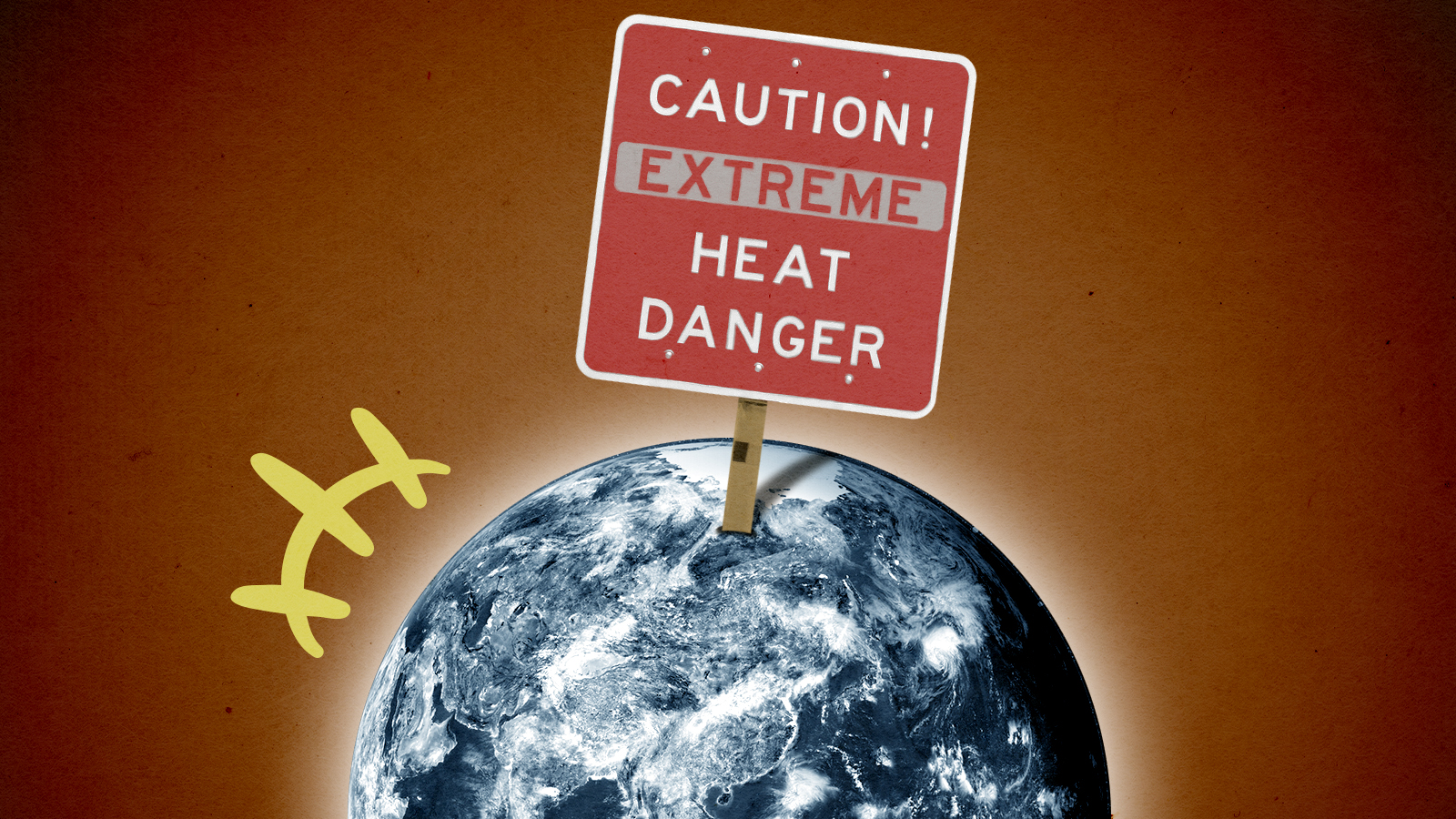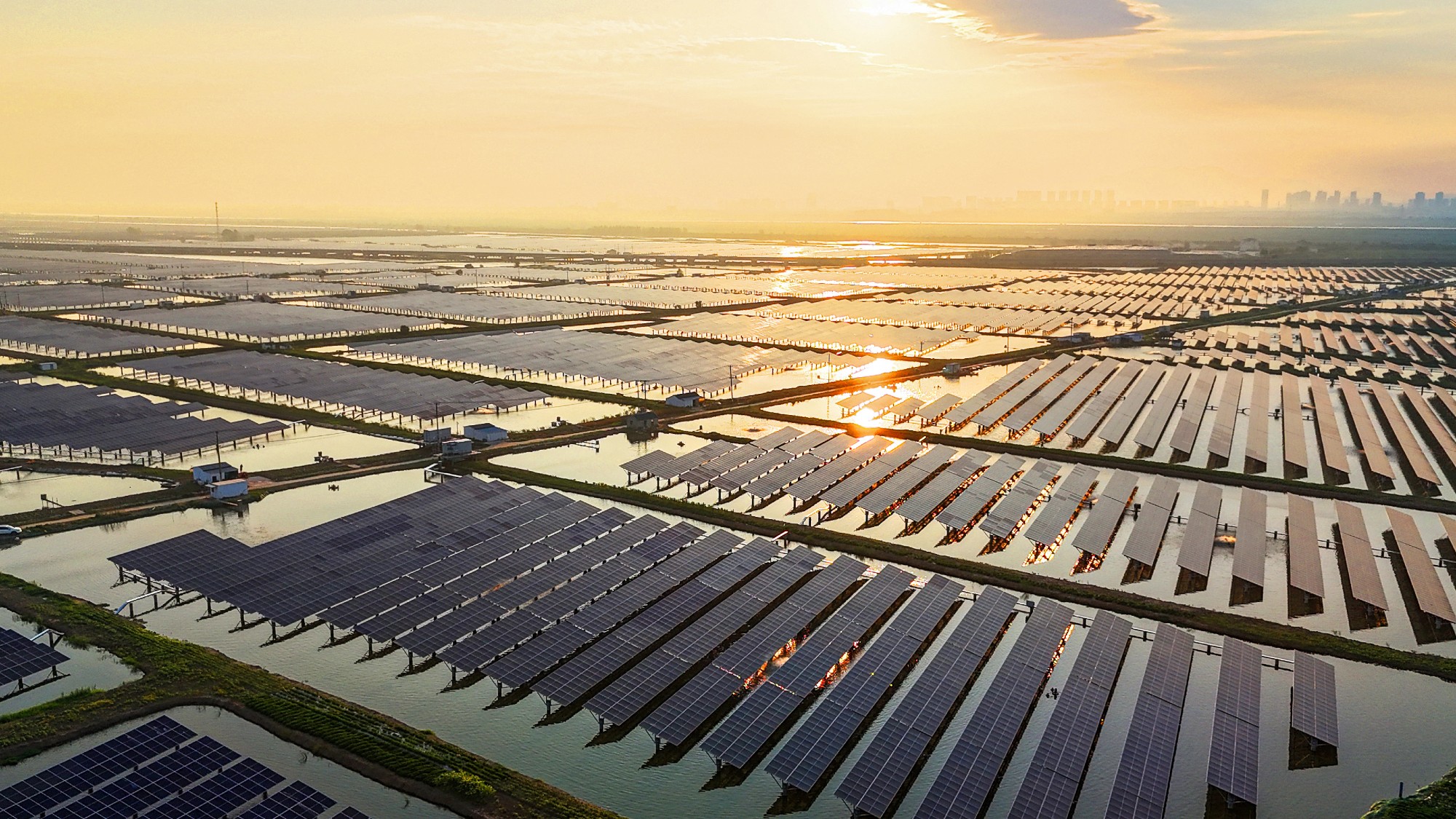2022's extreme weather
Another record-breaking year on planet Earth


In eastern Kentucky, at least 37 people died in flooding caused by heavy rain. With many residents still unaccounted for, Gov. Andy Beshear (D) said he expects the death toll to rise. The destruction is widespread, and it could take years to repair all of the damaged infrastructure. Here's everything you need to know:
Why was the flooding so severe?
The rain began overnight on July 30, with up to 10 inches of rain falling in some areas of eastern Kentucky in 24 hours. The ground was so saturated from the torrential downpour that it couldn't absorb the extra water, leading to flash floods. Rebecca Hersher of NPR's climate team explains that when the water has nowhere to go, it begins to "pool on the surface. And then if there's a hill — even a really small hill, one that you might not even notice — all that water starts to roll downhill. It gathers speed, it gathers power, it can pick up debris. And that is a flash flood. It's really dangerous. It can carry away cars, it can carry away houses, it can kill people."
Why did so many people die in the flooding?
Kentucky's state climatologist, Megan Schargorodski, told NBC News that "the biggest danger that came with this flooding is that most of the rain happened very quickly, very heavily, and overnight." William Haneberg, director of the Kentucky Geological Survey, said eastern Kentucky has "mountainous terrain and the valleys are very narrow. A lot of the areas affected are very remote. It may take you an hour to go through the curving mountain roads. In a lot of the remote areas, there may only be one way out. So if you wait too long, the bridges may be washed out." Schargorodski agreed, saying that "many routes get blocked due to floodwaters, and it can sometimes actually be more dangerous to evacuate."
The Week
Escape your echo chamber. Get the facts behind the news, plus analysis from multiple perspectives.

Sign up for The Week's Free Newsletters
From our morning news briefing to a weekly Good News Newsletter, get the best of The Week delivered directly to your inbox.
From our morning news briefing to a weekly Good News Newsletter, get the best of The Week delivered directly to your inbox.
In areas with higher poverty rates, where many people don't have cars or access to the internet, they might not have known right away about the flooding, or had a way to quickly escape the rising floodwaters. Forecasters were correct in predicting significant rainfall in eastern Kentucky, but it wasn't known which areas would flood; Schargorodski noted that evacuations can happen a few days before a hurricane hits, but it's different with a rain storm.
The victims include Gabriel Hensley, a 30-year-old father of five from Perry County who was swept away by floodwaters while trying to help an injured driver, as well as four siblings between the ages of two and eight years old who lived in Knott County. Beshear said the children were swept away by a strong current.
Are there still people missing?
Yes. Beshear said that as of Tuesday, there are hundreds of people across five counties who are unaccounted for, and in some rural areas, there's no way to know how many residents are missing — cell phone service is down, and the roads and bridges leading to these communities were wiped out by the flooding. That's also a problem for survivors, who need supplies like food, water, and medicine, but can't be reached. "I still have aunts and uncles that are stuck in hollers," Zack Hall, a resident of Knott County, told CNN on Tuesday. "They are diabetics. They need insulin." Hall said he was able to get to one relative's home with an ATV, "but there was no road" and the "infrastructure ... is just completely destroyed."
How much damage has been done?
This is "one of the most devastating deadly floods that we have seen in our history," Beshear said, and it is impacting thousands. The water swept some people miles away, and the governor told CNN it will take weeks to account for the missing and much longer to rebuild the destroyed communities.
A free daily email with the biggest news stories of the day – and the best features from TheWeek.com
The flooding wiped out bridges and roads and took down power lines, and residents are removing water, mud, and debris from their homes and trying to dry out their things. In the small city of Fleming-Neon, the city hall was completely destroyed, and there is a foot of mud covering everything inside the building, CNN reports. The city's bank, post office, and pharmacy all flooded, and the internet is down. Several schools across the region were also destroyed or heavily damaged, with Kentucky Department of Education spokesperson Toni Tatman telling CNN that some schools will have to delay reopening for the fall.
How can a similar tragedy be avoided in the future?
Climate change is fueling these storms that are bringing heavy rains to Kentucky, Hersher said, and climate scientists say that as humans keep burning fossil fuels, it's making the atmosphere hotter, so the air holds more moisture and it rains harder. In Kentucky, where heavy rain has increased by almost a third, Hersher said retention ponds can be built to collect excess water. She also said cities can upgrade their stormwater systems, which were built decades ago, to have bigger pipes built for the current climate.
The National Weather Service is also looking into new ways to give people as much time as possible to get to higher ground during a flooding event, Hersher said. As soon as a local office notices heavy rain in an area, they send out a flash flood alert to cell phones.
How can I stay safe in a flash flood?
The American Red Cross says it is important to know the difference between a flash flood watch and a warning — if it's a watch, it means a flash flood is possible, and if it's a warning, it means it is already happening or will begin soon.
During a flash flood, move to higher ground if you aren't already there, and steer clear of low-lying areas. Do not walk into floodwaters; there could be downed power lines, waste, wild animals, and dangerous debris in the water. If you are in a car, do not continue to drive toward the flooding; the Red Cross warns that cars can get swept away by less than two feet of moving water. If you are already on a flooded road and see that the water is rising, get out of your car and get to higher ground. At night, be extra cautious, since it will be harder to see your surroundings. Turn your television or radio to a local station, so you can hear the latest weather information and evacuation orders.
Catherine Garcia has worked as a senior writer at The Week since 2014. Her writing and reporting have appeared in Entertainment Weekly, The New York Times, Wirecutter, NBC News and "The Book of Jezebel," among others. She's a graduate of the University of Redlands and the Columbia University Graduate School of Journalism.
-
 In Suriname, the spectre of Dutch slave trade lingers
In Suriname, the spectre of Dutch slave trade lingersUnder the Radar Dutch royal family visit, the first to the South American former colony in nearly 50 years, spotlights role of the Netherlands in transatlantic trade
-
 Political cartoons for December 7
Political cartoons for December 7Cartoons Sunday’s political cartoons include the Trump-tanic, AI Santa, and the search for a moderate Republican
-
 Trump’s poll collapse: can he stop the slide?
Trump’s poll collapse: can he stop the slide?Talking Point President who promised to ease cost-of-living has found that US economic woes can’t be solved ‘via executive fiat’
-
 Death toll from Southeast Asia storms tops 1,000
Death toll from Southeast Asia storms tops 1,000speed read Catastrophic floods and landslides have struck Sri Lanka, Indonesia, Thailand and Malaysia
-
 Can for-profit geoengineering put a pause on climate change?
Can for-profit geoengineering put a pause on climate change?In the Spotlight Stardust Solutions wants to dim the sun. Scientists are worried.
-
 How will climate change affect the UK?
How will climate change affect the UK?The Explainer Met Office projections show the UK getting substantially warmer and wetter – with more extreme weather events
-
 Can the UK do more on climate change?
Can the UK do more on climate change?Today's Big Question Labour has shown leadership in the face of fraying international consensus, but must show the public their green mission is ‘a net benefit, not a net cost’
-
 Did Cop30 fulfil its promise to Indigenous Brazilians?
Did Cop30 fulfil its promise to Indigenous Brazilians?Today’s Big Question Brazilian president approves 10 new protected territories, following ‘unprecedented’ Indigenous presence at conference, both as delegates and protesters
-
 Can the world adapt to climate change?
Can the world adapt to climate change?Today's Big Question As the world gets hotter, COP30 leaders consider resilience efforts
-
 Taps could run dry in drought-stricken Tehran
Taps could run dry in drought-stricken TehranUnder the Radar President warns that unless rationing eases water crisis, citizens may have to evacuate the capital
-
 The future of the Paris Agreement
The future of the Paris AgreementThe Explainer UN secretary general warns it is ‘inevitable’ the world will overshoot 1.5C target, but there is still time to change course
